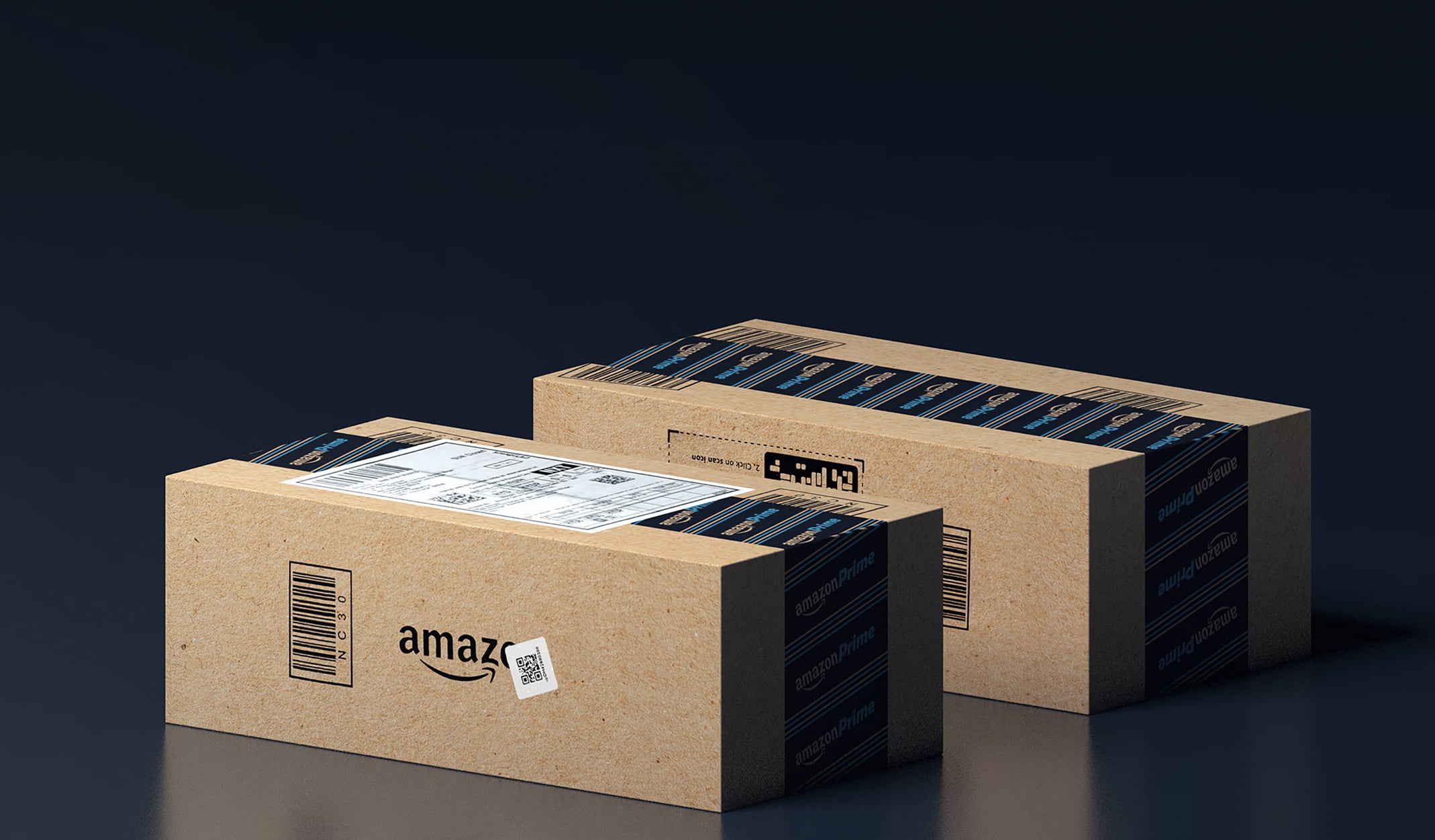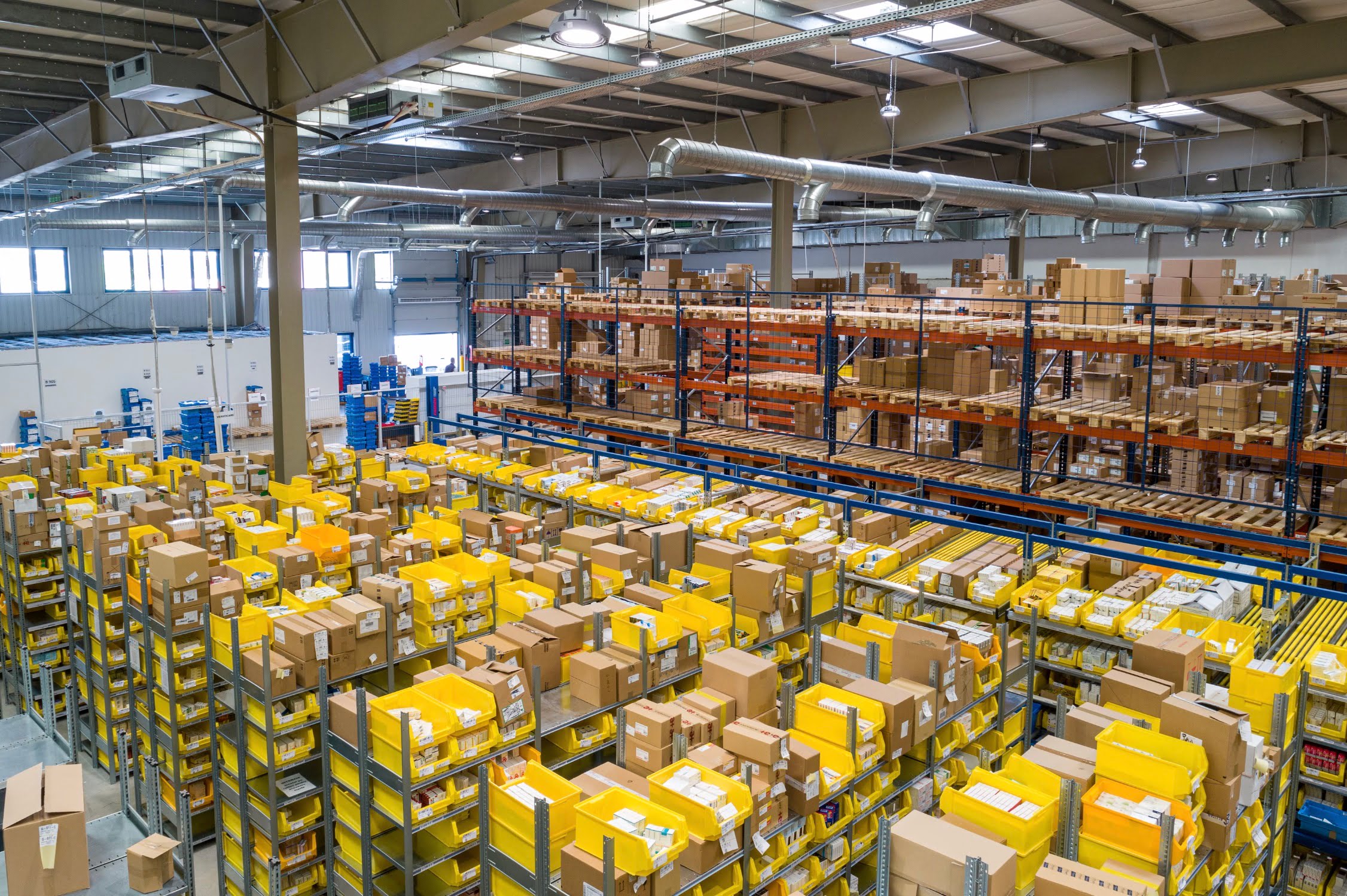Ultimate Guide to FBA vs FBM for Amazon Book Sellers

The e-commerce world has revolutionized how we buy and sell, with Amazon serving as a colossal pillar in this ever-evolving market.
It’s the go-to place for so many people, especially regarding books.
And when it comes to selling books on the platforms, sellers and resellers have a lot of options.
We’re, of course, talking about FBA vs FBM; Fulfillment by Amazon (FBA) and Fulfillment by Merchant (FBM).
Whether you’re new to book reselling or a seasoned bookseller, choosing between the two is a crucial decision that significantly impacts your sales.
As with everything in life, both fulfillment options have pros and cons, and that’s what we’re diving into today. With a clear understanding of what both services offer, choosing which is best should at least be a little less daunting.
Let’s get into it.
An Introduction to Selling Books on Amazon - FBA vs FBM
To kick this off, let’s first look at the product infrastructure of Amazon.
On the surface, it looks a little like a magazine. Just as a magazine displays a variety of products, Amazon offers a platform where each item has its potential buyer. In the world of book selling, this becomes especially relevant.
Given this vast selection, as a bookseller on Amazon, you have the option to sell books that are already listed on the site. This is what you will do almost every time you want to sell a book, as most books are already listed on Amazon.
This process looks a little like this:
- Find the product on Amazon just like a buyer
- Click the “Sell on Amazon” button, which will take you to Seller Central
- Add your offer details, including the price, condition (new or used), quantity, and fulfillment channel (FBA vs FBM)
You can list an item via Seller Central, which involves filling out a form and completing the process in about 1-2 minutes at total. While this may seem quick for a few items, it can become lengthy when listing hundreds of books.
This is exactly when you need a dedicated listing software, not just Amazon’s standard tools. Amazon lets developers create specialized listing software because they understand one solution can’t fit every seller’s unique needs. For a bookseller, it’s crucial to pick a listing software that offers a ‘no click listing experience’. This means you set everything up once, lock your settings, and then simply scan barcodes to list each item, without any extra clicks. This feature is vital as book sellers often have a large inventory with only a single copy of each book. So, the ability to list books quickly and efficiently by just scanning is a key factor in choosing the right listing software. Bookz Pro offers a super useful listing process for book sellers but we will be talking more about it later. If you would like to take a quick look at right now you can check out this page.
Beyond the methods of listing items on Amazon, a critical element of bookselling is how orders are fulfilled, impacting your sales volume directly. Whether you choose FBA or FBM will define your fulfillment process. This choice plays a significant role in your business’s success, making it essential to understand the intricacies of Amazon FBA, which we will delve into next.
Understanding Amazon FBA

Fulfillment by Amazon (FBA) is the most popular order fulfillment option available to Amazon sellers.
As a merchant, instead of sending your products out yourself every time someone places an order, you rather store what you have within Amazon’s existing fulfillment centers. When an order is placed, Amazon takes care of the packaging and shipping to customers.
How FBA Works
When you choose to leverage FBA, you essentially ship your products to Amazon fulfillment centers to be stored until they are sold.
Once the products arrive and are processed, Amazon lists them online and handles sales transactions.
Again, when a customer orders a product, Amazon picks, packs, and ships the item to the customer, providing tracking information and handling any returns or exchanges.
The cost of selling on FBA is determined simply based on the product type you’re shipping, the size, the weight, and the overall costs. In the US, there’s a 15.3% referral fee for books for every transaction on Amazon, plus the other selling fees. We’ll cover it shortly later in this post.
The Benefits of Amazon FBA
- ✅ Buy Box Win: Selling through FBA increases your likelihood of winning the Buy Box, the key factor in boosting sales. Securing more Buy Box wins translates to higher sales, and opting for FBA significantly enhances your chances of achieving this.
- ✅ Convenience: FBA simplifies the selling process by handling inventory management, packaging, shipping, and easing a considerable burden on sellers.
- ✅ Prime Eligibility: Products sold via FBA are automatically enrolled in the Amazon Prime program (of which there are over 148 million users in the US alone), increasing their visibility for Prime customers who value fast shipping and excellent customer service.
- ✅ Efficient Shipping: Amazon’s vast logistics network ensures swift and cost-effective shipping, enhancing the customer experience and increasing the likelihood of repeat business.
- ✅ Customer Trust: By choosing FBA, sellers can tap into Amazon’s excellent customer service track record, providing buyers with a sense of security and confidence during their purchase.
Instances When FBA is the Perfect Choice for Sellers - FBA vs FBM
While your business requirements can differ from everyone else’s, there are a few core concepts that would suggest that FBA is ideal for your business:
- High-demand products: For items with a consistent sales volume, utilizing FBA ensures fast shipping, customer satisfaction and most importantly higher chance to win Buy Box and leads to more sales at the end of the day.
- Limited storage or manpower: FBA is ideal for businesses with limited storage facilities or staffing resources to manage inventory and shipping. It’s an excellent starting point for those new to Amazon, offering a manageable way to run a business even from a garage.
Understanding Amazon FBM

As the name suggests, Fulfillment by Merchant (FBM) is another fulfillment method in which sellers manage their own storage, packaging, and shipping processes rather than relying on Amazon to handle these tasks.
How FBM Works
When using FBM, you need to take the time to handle the inventory of your stock yourself.
Upon receiving an order, you take care of the entire process: packing the item, arranging for shipping, and handling customer service, including returns and refunds.
The Benefits of Amazon FBM
- ✅ Essential for Slow-Selling Yet Profitable Items: While FBA demands a certain sales velocity to maintain favorable metrics for the Buy Box, FBM shines for slow-selling items that are still profitable. FBM offers a strategic advantage here, as it doesn’t require adherence to sales speed metrics, allowing sellers to capitalize on slower-moving items without the pressure of FBA’s storage fees or performance metrics. This makes FBM an ideal choice for long-tail items and ensures that sellers don’t miss out on profitable opportunities.
- ✅ Greater Control Over Inventory: FBM allows sellers to maintain control over their inventory and make quicker adjustments to listings and stock levels.
Scenarios When FBM is the Right Option for Sellers
Slow-moving Inventory: FBM is ideal for products with low sales volume items, helping you avoid negative impact on the FBA metrics.
Oversized Items: With FBM, sellers can handle oversized products that may incur higher fees if stored at an Amazon fulfillment center.
Advanced Supply Chain Management: Sellers with a proficient warehouse and shipping system can leverage FBM to utilize their well-established logistics, ensuring complete control over their operations. As your business expands, you may consider diversifying into multiple marketplaces for more profits. However, this step is more suitable for later stages of business growth. Also, remember that effective software integration is essential for managing orders across various platforms to avoid complications like duplicate orders.
Amazon FBA vs FBM: Direct Comparison

Okay, booksellers, let’s get into the real meat of this guide, breaking down everything you need to know when deciding between FBA and FBM for your business. There are a few key parameters you need to think about:
Operational Ease - FBA vs FBM
🚚 FBA: As Amazon handles packing, shipping, returns and refunds, operational ease is high. Inventory management is seamless, reduces administrative tasks, and frees up time for you to focus on other areas of your business.
🏠 FBM: Sellers manage all operational aspects, including packing, shipping, customer service, and inventory management. Therefore, this option requires more effort and organization on your part.
FBA is the winner.
Shipping Speed - FBA vs FBM
🚚 FBA: Amazon’s robust delivery network ensures quick and reliable shipping, and since your products are already in the Amazon warehouse, they’ll be available for faster Prime deliveries. That’s a big bonus for your customers!
🏠 FBM: Since you’re handling all the shipping, the delivery speeds and reliability depend upon your choice of logistics and delivery services.
FBA is the winner.
Costs - FBA vs FBM
🚚 FBA: FBA generally incurs higher fees for storage and fulfillment services, including shipping to the customer. However, sellers don’t bear direct shipping costs to customers.
🏠 FBM: The FBM model often results in lower direct costs, as it bypasses Amazon’s storage and fulfillment fees. Still, sellers should factor in indirect expenses like storage, shipping to customers, and packing materials. Overall, the total cost tends to be slightly lower than FBA but comparable.
No clear winner.
Inventory Control - FBA vs FBM
🚚 FBA: Handing over inventory control to Amazon can be advantageous in terms of storage and logistics management but may limit the amount of direct control you have over your stock.
🏠 FBM: With FBM, you’ll always have direct control over your inventory. This can be beneficial for niche or seasonal products but potentially demanding in terms of storage space and management.
FBM is the winner.
Customer Service - FBA vs FBM
🚚 FBA: Amazon manages returns and refunds, ensuring a consistent service level. However, you’ll still need to respond to customer messages. Additionally, Amazon may offer broader return and refund options than you might prefer.
🏠 FBM: In FBM, you handle customer returns and refunds, giving you more control over approvals. However, dealing with negative customer feedback can be challenging, as there’s a lower chance of getting it removed compared to FBA.
No clear winner.
Best Suited For
🚚 FBA: Products with high sales volume, even those with smaller profit margins.
🏠 FBM: Slow-moving items. Remember, if your operation is small and ships only a few items daily, ensure you have decent profit margin to cover your opportunity cost.
FBA is the winner for small operations. For larger businesses, there’s no definite winner; both FBA and FBM should be integral parts of your business strategy.
Key Takeaways
As you can see, the choice between FBA and FBM should be based on your business model, product type, resources, and preference.
However, it’s important to remember that both options can also be used in tandem to provide a flexible, tailored approach to meet diverse seller needs.
Making a Choice – Which One is Best for Your Business?

The most important thing to do is not to copy what others are doing, trying to emulate their success, but instead think about your own specific business requirements and then choose the best-suited platform.
A few vital considerations can guide you toward the most beneficial decision for your business include:
- ➡️ Product Type – High-volume products are typically better suited for FBA, while slower-moving items may merit the FBM approach.
- ➡️ Business Model & Strategy – For new starters and small businesses, FBA offers many benefits that you won’t want to miss. As your operation grows, incorporating FBM can help you profit from slow-moving items. For enterprise sellers, FBM will likely become your main channel for selling on Amazon, although FBA remains in use, except in specific cases with unique reasons for discontinuation.
- ➡️ Warehouse & Storage Capacity – FBA is ideal if you have limited storage. FBM allows for more control and hands-on inventory management.
Ultimately, it’s not just about picking FBA or FBM. Recognizing the potential of each method and perhaps adopting a hybrid approach can maximize profitability and success for your Amazon business. Your well-informed decision is crucial for optimizing the strengths of your chosen fulfillment method.
An Introduction to Bookz Pro Solutions
BookzPro is an all-in-one software solution designed specifically for Amazon booksellers. It offers a suite of tools and services that cater to sellers at every level, including scouting, listing, repricing, and inventory management.
With BookzPro, you can automate tasks and increase profit margins effectively. Its features include Bookzy, a scouting application available on Android, iOS, and the web; Automation Rules, a smart repricing system; MyLister, a fast and easy-to-use listing interface; and MyPricer, a robust inventory management tool.
The platform is backed by a capable support team that consists of former booksellers, offering tailored solutions for you, ultimately helping you to run a successful book reselling business.
Conclusion
When selling books on Amazon, it’s crucial to understand both FBA and FBM and what they have to offer your business. It can very much make or break how successful you can be.
This means taking your time to assess your business objectives, product type, operational capacity, and customer service goals when deciding which option, or a combination of both, best fits your needs.
Whether you’re an FBA or FBM seller, or a combination of both, having the right tools at your disposal is critical to attaining optimal results. That’s why we recommend Bookz Pro – a service designed to simplify and streamline the challenges of selling books on Amazon. With powerful tools, Bookz Pro ensures you can focus on what matters most – growing your business and maximizing profits.
🌟 Maximize your Amazon bookselling profits – start your 14-day free trial of BookzPro today! 🌟



